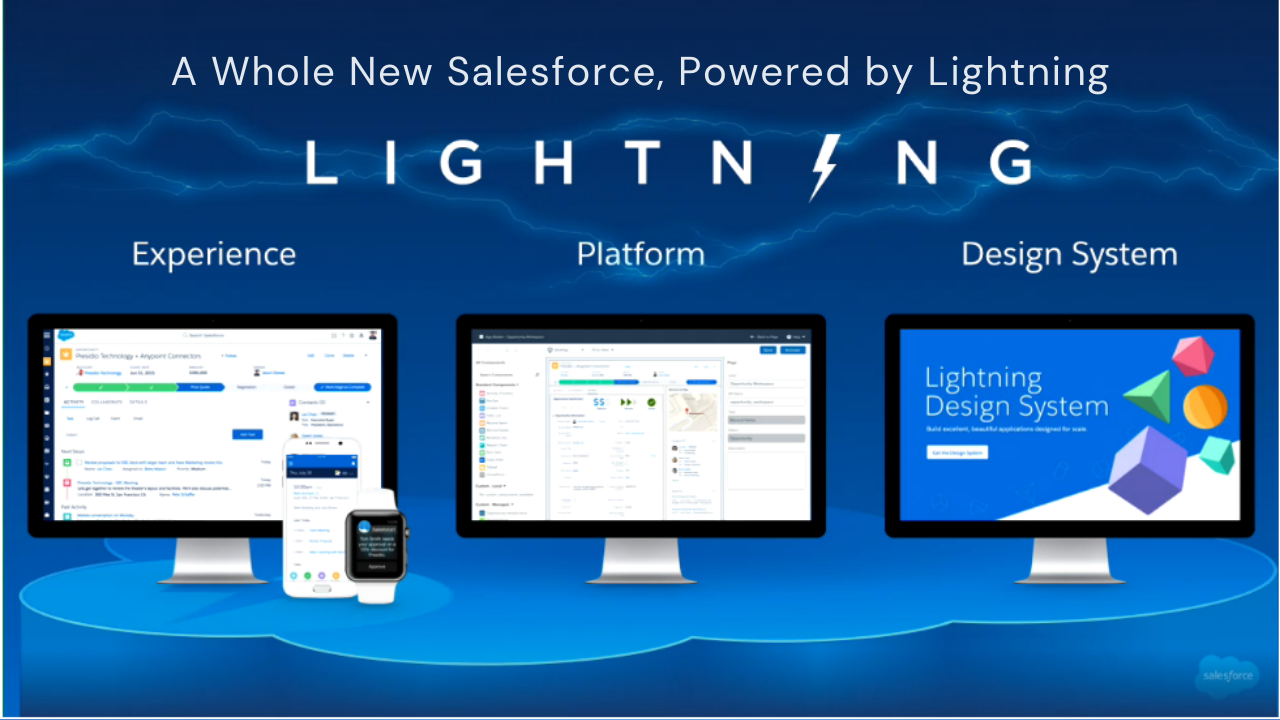
Introduction
Salesforce Lightning has emerged as the future of the platform, offering a modern, user-friendly interface with powerful features to enhance productivity and customization. However, migrating from Salesforce Classic to Lightning can present several challenges for organizations. In this blog, we’ll explore these challenges and provide actionable solutions for a seamless transition.
1. Understanding the Key Differences Between Classic and Lightning
Challenge:
One of the main challenges is understanding how Lightning differs from Classic. Salesforce Lightning provides a new UI, component-based architecture, and enhanced capabilities, which can be overwhelming for users accustomed to Classic.
Solution:
Start by educating your team on Lightning’s key features, like drag-and-drop functionality, customizable dashboards, and Kanban views. Providing hands-on training and demonstrations can help users become more comfortable with the interface. Salesforce’s Lightning Experience Readiness Check is also useful for assessing feature compatibility between Classic and Lightning.
2. Customizations and Code Compatibility
Challenge:
Existing customizations, Visualforce pages, and Apex code in Classic might not translate easily into Lightning. Incompatibilities between old code and the Lightning framework can result in functionality gaps.
Solution:
Conduct a thorough audit of custom code, Visualforce pages, and third-party apps. You may need to refactor or rebuild some components in the Lightning framework, especially those using JavaScript buttons, which aren’t supported in Lightning. Tools like Salesforce’s Lightning Experience Configuration Converter can help with this.

3. User Adoption and Resistance to Change
Challenge:
Resistance to change is common, with users hesitating to switch from Classic to Lightning due to concerns about a learning curve or decreased productivity.
Solution:
Implement a strong change management plan. Focus on training, support, and demonstrating the benefits of Lightning, such as improved productivity through automation. Consider rolling out Lightning in phases, starting with a pilot group, gathering feedback, and iterating before a full launch.
4. Performance Issues in Lightning Experience
Challenge:
Some organizations encounter performance slowdowns when migrating to Lightning, particularly with large data volumes or complex configurations, which can frustrate users.
Solution:
Optimize performance by reducing unnecessary customizations and large data sets on pages. Use Salesforce’s performance-enhancing features like Enhanced Lightning Grid and Lightning Data Service. Regularly monitor performance and consult Salesforce’s Performance Best Practices for further optimization.
5. UI Customization and User Experience Design
Challenge:
Salesforce Lightning’s new UI requires a rethinking of the user experience. While Lightning components offer flexibility, setting them up in a way that aligns with business processes can be challenging.
Solution:
Involve end-users and administrators in designing the new user interface to ensure it aligns with workflows. Use the App Builder to create custom pages and components tailored to specific roles. This approach will enhance the user experience and make the interface more productive for your team.

6. Third-Party App Compatibility
Challenge:
Not all third-party apps in Salesforce Classic are compatible with Lightning Experience, potentially disrupting critical business processes.
Solution:
Before migrating, review your AppExchange apps to ensure they are Lightning-ready. Salesforce’s Lightning Experience App Manager can identify apps that need updates. For non-compatible apps, contact vendors or explore native Lightning alternatives.
7. Testing and Quality Assurance
Challenge:
Inadequate testing is a common pitfall in Salesforce Lightning migration. Functionality, workflows, and integrations can encounter issues if not tested thoroughly.
Solution:
Implement a robust testing strategy that includes unit testing, regression testing, and user acceptance testing (UAT). Test in a sandbox environment to ensure everything works as expected before rolling out changes to production.
8. Cost and Time Management
Challenge:
Migrating to Lightning can be resource-intensive, especially for organizations with extensive customizations.
Solution:
Create a detailed migration plan, breaking down the migration into manageable phases. Budget for unexpected delays and ensure all stakeholders are aligned on the timeline. Engaging Salesforce-certified consultants can streamline the process, making it faster and more efficient.

9. Post-Migration Support and Continuous Optimization
Challenge:
Post-migration, organizations may face ongoing issues or discover opportunities for further optimization.
Solution:
Establish a post-migration support plan to address lingering issues. Provide continuous training to help users leverage Lightning’s features. Periodically review and optimize the system to ensure it evolves alongside your business needs. Consider designating a Lightning Champion to promote ongoing adoption and innovation.
Conclusion
Migrating to Salesforce Lightning is a significant step toward future-proofing your CRM. While it comes with challenges, addressing issues like customizations, user adoption, and performance proactively will make the transition smooth and beneficial. With proper planning, training, and support, your team can maximize Salesforce Lightning’s value and capabilities.
Need help with your Salesforce Lightning migration?
Contact Dohrinii Technologies for expert consultation and seamless transitions from Salesforce Classic to Lightning. Let our experienced team guide your business toward a brighter, more productive future with Salesforce.

